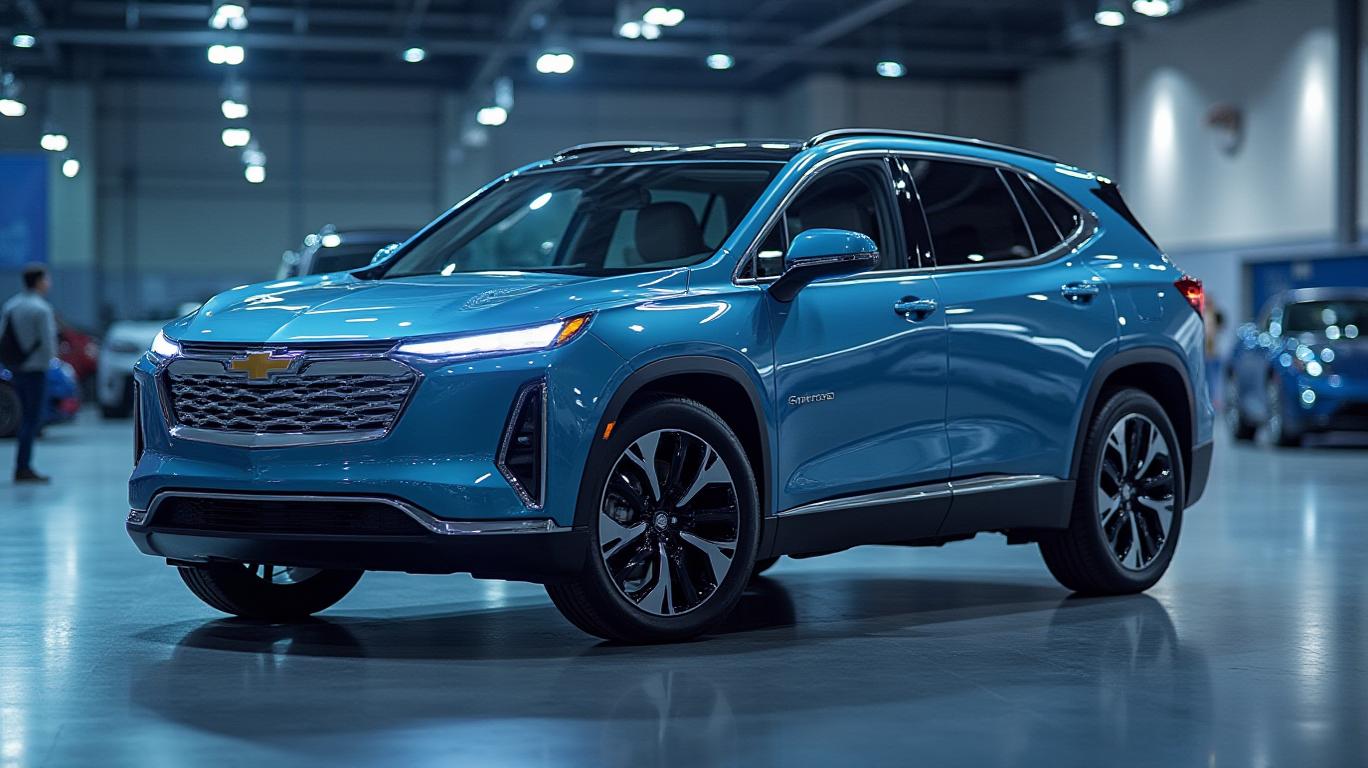General Motors Navigates Tariffs and Drives EV Growth in Strong Q1 2025 Results
General Motors (GM) delivered a resilient performance in its Q1 2025 earnings, showcasing robust sales growth, disciplined pricing, and strategic adjustments to navigate rising trade policy headwinds. The automaker’s ability to balance EV expansion, U.S. manufacturing dominance, and cost discipline positions it as a key player in an increasingly competitive automotive landscape.
Financial Strength Amid Trade Challenges
GM reported $44 billion in revenue, a 2% year-over-year increase, driven by a 17% surge in U.S. deliveries. The company’s North America segment delivered an 8.8% EBIT margin, within its 8%–10% target range, despite $500 million in incremental warranty costs tied to engine supplier issues. U.S. market share rose nearly 2 percentage points to 17.2%, outperforming competitors while maintaining incentives 300 basis points below industry averages—a testament to pricing discipline.
EV Momentum and Profitability Near Breakeven
GM’s electric vehicle (EV) sales soared 90% year-over-year, securing the #2 U.S. EV market share at 10% (rising to 12% in March). The Chevrolet Equinox EV and Cadillac Lyric are leading growth in mainstream and luxury segments, with Cadillac EVs now accounting for 20% of U.S. sales. Notably, nearly 50% of EVs produced in Q1 were variable-profit positive, and the overall EV portfolio is near breakeven, signaling progress toward GM’s goal of $20 billion in EV revenue by 2025.

Trade Policy Mitigation: U.S. Production Surge and Supply Chain Resilience
New U.S. trade policies, including 25% tariffs on non-compliant vehicles, are expected to cost GM $4 billion–$5 billion annually. To offset this, GM is:
- Increasing full-size pickup production at its Fort Wayne plant by 50,000 units annually.
- Boosting U.S. content in North American vehicles to 80% compliance with USMCA rules, with Chinese-sourced parts for U.S. production now under 3%.
- Partnering with Lithium Americas to secure 100% of its lithium needs via a Nevada project opening in 2027.
The company also leveraged a “tariff offset” program, which rewards U.S. production volume with tariff relief, and renegotiated supplier contracts to cut costs by $500 million.
Risks and Operational Hurdles
Despite these strengths, risks remain:
- Warranty Costs: A $500 million Q2 hit from addressing engine supplier defects (6.2L engines in 2021–2024 models) could pressure margins. However, GM expects annual warranty costs to remain flat versus 2024.
- Tariff Uncertainty: Ongoing U.S.-China trade negotiations could amplify tariff impacts, though GM has already shifted production and sourcing to mitigate risks.
- Foreign Exchange: Peso weakness cost GM $300 million in Q1, a headwind expected to persist.
Strategic Initiatives: Software, Batteries, and Global Expansion
GM is doubling down on software-defined vehicles, partnering with NVIDIA to develop next-gen AI and autonomous systems. Its Cruise autonomous unit is now integrated into North America operations, with cost targets aligned to core business goals.
In China, GM’s equity income turned positive at $50 million, with 53% growth in new energy vehicle (NEV) sales. Starting mid-2025, all new China models will be NEVs, including premium “Electrosub”-branded vehicles—a bold move to capitalize on China’s EV boom.
Investment Considerations
GM’s Q1 results highlight its dual strengths: U.S. manufacturing leadership and EV momentum. While tariff-related guidance cuts to $10–$12.5 billion in full-year EBIT-adjusted reflect near-term challenges, GM’s mitigation strategies and disciplined execution suggest long-term resilience. Key catalysts for investors include:
- EV scaling: Breakeven profitability in EVs and launches of high-margin models like the Cadillac Escalade IQ.
- Battery cost reductions: New chemistries and U.S. lithium sourcing could lower battery costs by $10,000 per vehicle by .
- Share buybacks: GM paused repurchases temporarily but retains $4.3 billion remaining under its authorization, suggesting potential upside once operational clarity improves.
Conclusion
General Motors is navigating a complex landscape of trade policy shifts and EV competition with a mix of strategic production adjustments, disciplined cost management, and bold investments in technology. Its Q1 results—driven by 17% U.S. sales growth, 90% EV sales growth, and 8.8% North America margins—underscore its ability to adapt. While risks like tariffs and warranty costs loom, GM’s focus on U.S. manufacturing dominance, EV profitability, and software innovation positions it to sustain growth. For investors, GM’s stock offers a blend of near-term resilience and long-term EV potential, making it a compelling play in an industry undergoing rapid transformation.
Data as of Q1 2025 earnings call. Risks include trade policy changes, supply chain disruptions, and EV market competition.


_442a2dcc1749832873286.jpeg)
_e68fac6d1749831664430.jpeg)





